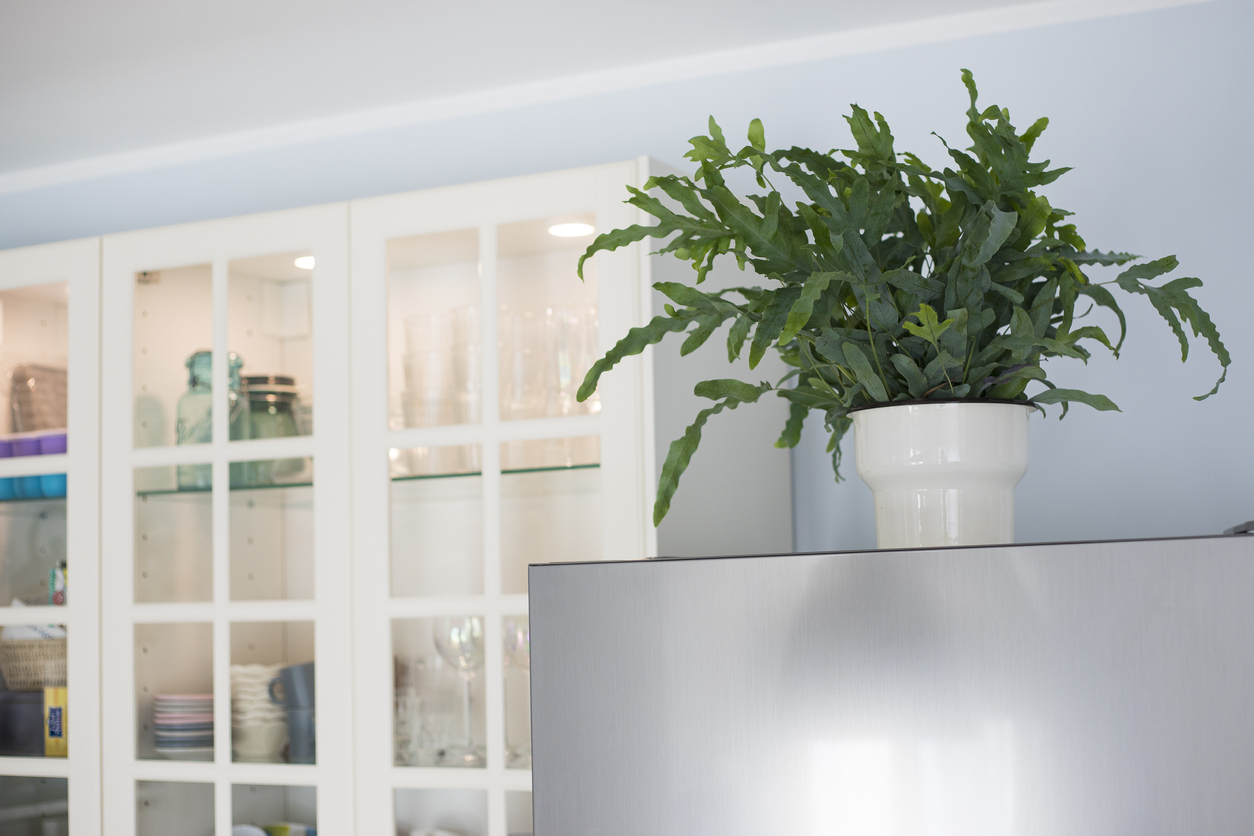We may earn revenue from the products available on this page and participate in affiliate programs. Learn More ›
Whether your home is practically a greenhouse all year long or you only have a few indoor plants, helping them grow and thrive is probably your goal. While some houseplants are hard to grow, many others are very resilient and can survive in locations such as the bathroom, the laundry room, or even the basement. However, there are a few spots where you should never put a plant. Ignoring these recommendations could threaten the health of the plant or even potentially damage some of your belongings.
1. On Top of the Refrigerator

While it may seem surprising, placing a plant on top of the refrigerator is almost always a bad idea. First, unless your refrigerator happens to be right in front of a window, there won’t be sufficient light for most plants to grow. Refrigerators are often on interior walls or even underneath cabinets, making them a rather dark and gloomy place, certainly not what a plant will be looking for.
Beyond the poor lighting, the temperature and humidity level on the top of a fridge also isn’t ideal for most plants. The area around the fridge generally has a low humidity. When that is combined with the heat the appliance lets off as it runs, it can spell trouble for your plants. They’re going to be rapidly absorbing water from the soil, requiring you to water much more frequently or face them dying. And, don’t forget how inconvenient it will be to climb up a ladder every few days to water a plant that is up high on top of the fridge.
RELATED: 10 Low-Maintenance Houseplants to Keep Indoor Air Fresh
2. Next to a Heater

You’ll also want to avoid putting your plants right next to a heater. This includes radiators, space heaters, and heating/cooling vents. Plants placed in direct proximity of a heater are exposed to very high temperatures and low humidity levels, which isn’t ideal for most plants. The ideal distance from the heater will vary based on the type of plant. For example, succulents, which typically require minimal care, may do OK if they’re only about 3 feet from the heat source, while plants that do better with higher humidity levels, such as bamboo, should be placed significantly farther away (a minimum of 10 feet).
RELATED: 19 of the Best Indoor Hanging Plants
3. In a Corner

You shouldn’t put plants—particularly tropical indoor plants—in the corners of a room. Corners are often dark, and such a space would likely be especially troublesome for plants. With about half of the plant facing the wall, it just won’t get enough sunlight to thrive and may end up losing some leaves. If the corner of a room is the only place that is available, be selective about the type of plant that you place there. Snake plants, ferns, spider plants, and other low-light houseplants are a few options to consider.
RELATED: 12 Lucky Plants Worth Bringing Into Your Home
4. Too Close to Electronic Equipment

There are several benefits associated with adding houseplants to the home office. As just one example, the American Society for Horticultural Science found that indoor plants can help reduce stress. However, you want to be selective about where you put plants in your home office. It may not have occurred to you, but you shouldn’t place plants too close to your computer, printer, power strips, or other electronic equipment. Keeping plants too close to electronics increases the chances that something will be accidentally damaged. For example, as you’re watering, you could splash water on your devices or petals from the flowers of your blooming indoor winter plants could drop onto the equipment.
RELATED: 6 Indoor Plants That Don’t Need Drainage
5. In a Spot With Too Much Direct Sunlight

Sunlight is good for plants. However, too much of a good thing can be bad. Many plants do best in shade or partial shade, so putting them in a window sill where they’re exposed to direct sunlight for hours isn’t a good idea. When these plants get too much direct sun, it can lead to the chlorophyll inside each leaf to break down, resulting in pale or faded sections that will turn brown if the damage continues. Excessive sunlight rather than indirect light can also scorch the tips of the leaves.
RELATED: The 8 Worst Houseplants for People with Allergies
6. On Top of the Microwave

Just as you shouldn’t put your plants on top of the refrigerator, the same is true for the microwave. The reason for this is twofold. First, it can threaten the health of the plant. Microwaves emit heat as they work, which can create a poor growing environment for your plant.
Second, it isn’t a good idea to store things on top of the microwave. When the microwave is in use, plants and other items could potentially block the vents and prevent the appliance from functioning properly. Heavy items, like big indoor plants—could potentially damage the top or the overall structure of the microwave.


